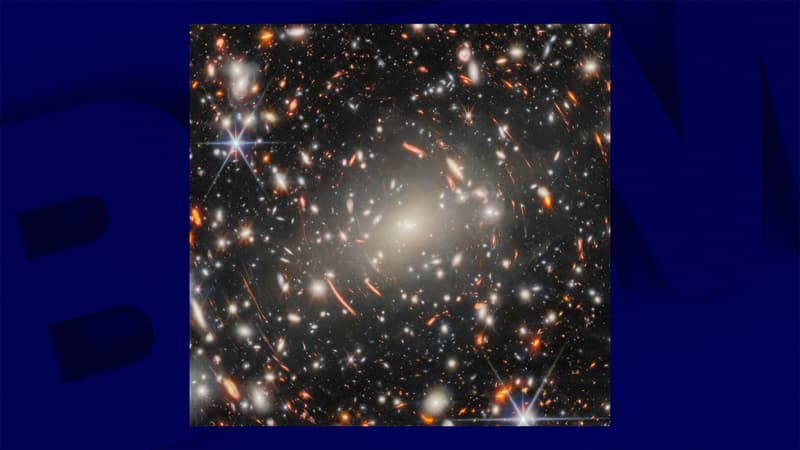It is a “very particular galaxy” identified by the researchers of the Astrophysique de Paris Institute (University of Sorbonne/CNRS) of “the deepest image of the universe” revealed by the James Webb satellite. It was seen after the analysis of the infrared data sent by the telescope, Launched in December 2021 from Guyana.
This galaxy would include the first generation of stars in the universe. Called “Glimpse-166043”, the galaxy could contain “Population Stars III”, formed shortly after the Big Bang, at the same time called “dark age.”
At that time, 250 million years after the formation of the universe, “the first stars shed light on a universe still young and opaque,” according to Sorbonne researchers in a note published on Tuesday, May 27.
Results to be confirmed this summer
These stars “would have been formed only from Big Bang’s primordial hydrogen and helium, without any heavier element” and have never been observed so far.
“They would represent the first stellar generation of the universe, in the origin of the production of the necessary elements for the formation of planets and life,” the researchers advance.
The observed stars “would be the ancestors of very old stars that are still present in certain dwarf galaxies near the Milky Way.”
The characteristics of the galaxy arouse optimism in scientists, because it presents “a very low light, a low oxygen content and extremely young and warm stars.”
How did they study this galaxy despite its weak light? “When exploiting the gravitational lens effect of the Abell S1063 galaxies,” researchers have managed to “observe galaxies ten times less luminous than those detected so far.” But prudence, because the origin of the galaxy remains “uncertain” for the moment, and a campaign of spectroscopic observations in July should make possible more about this point.
Source: BFM TV


